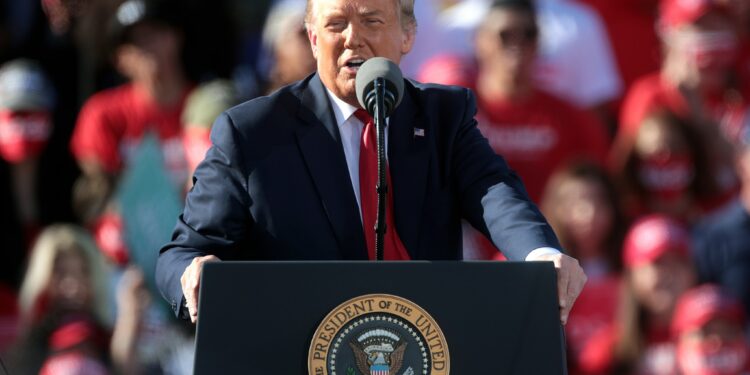
President Donald Trump unveiled a new visa initiative on Tuesday, designed to attract wealthy investors to the United States. This new program, dubbed the “Gold Card,” aims to create an investment-based pathway for foreign nationals who are willing to invest a significant amount in the U.S. economy. Applicants will need to pay a hefty $5 million to participate in the program, which is set to be operational in just two weeks.
Trump framed the Gold Card as a premium alternative to the current investor visa, known as the EB-5, which has faced increasing scrutiny. As the Biden administration has expanded immigration routes, particularly for individuals from Central and Southern America, Trump has consistently advocated for a merit-based immigration system. He views this new visa program as a way to attract individuals who will bring not only their capital but also jobs and economic growth to the U.S.
The new Gold Card program will replace the existing EB-5 visa, which allows investors to gain U.S. residency in exchange for a financial commitment. Under the current EB-5 program, applicants are required to invest between $800,000 and $1 million, in addition to paying fees between $100,000 and $200,000 to the U.S. Citizenship and Immigration Services (USCIS). The Gold Card, on the other hand, will streamline the process, offering a direct route to citizenship for wealthy investors willing to pay the new $5 million fee.
Trump emphasized that the Gold Card would be a “Green Card plus,” attracting highly successful individuals who are expected to contribute significantly to the U.S. economy. He noted that these investors would not only bring their financial resources but also create jobs and pay substantial taxes. Commerce Secretary Howard Lutnick echoed this sentiment, stating that the current EB-5 program is underpriced and often exploited, whereas the Gold Card will set a higher bar for entry.
The introduction of this program aligns with Trump’s broader vision of promoting legal immigration that benefits the country economically. He highlighted the potential for the Gold Card to attract the best and brightest minds, particularly from U.S. colleges, suggesting that the program could eventually offer between one and ten million Gold Cards. Additionally, the significant funds generated through the program could help offset the nation’s growing deficit, with the higher investment amount outpacing the current EB-5.
While the program has received support from corporate law experts, some caution remains. Immigration attorney Steven Brown pointed out that the proposal could face challenges, especially considering the complex legislative process required to create new visa categories. Ultimately, Congress would need to pass new legislation to make the Gold Card a reality, and Trump would need to sign it into law.
Despite these hurdles, Trump remains confident that the Gold Card program will provide a much-needed boost to the U.S. economy, attracting global talent and ensuring that America remains a leader in innovation and enterprise.
